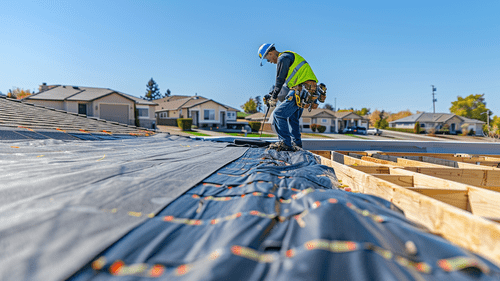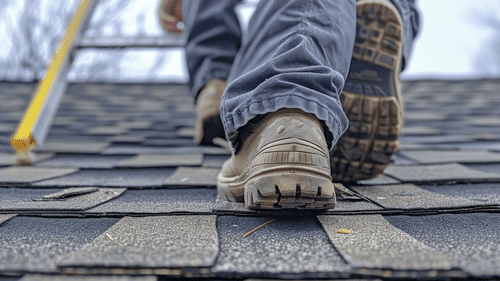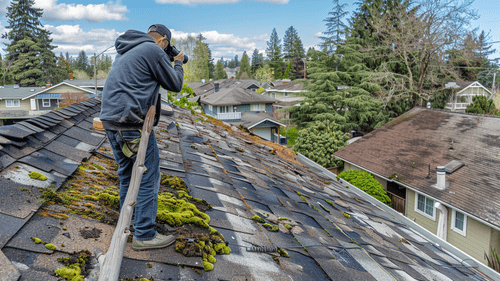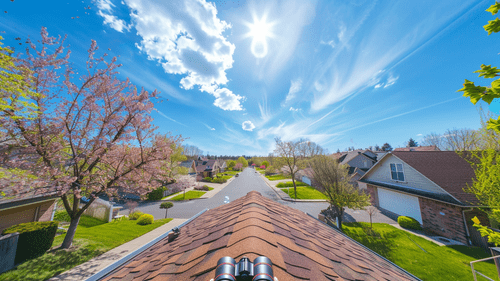Introduction
Have you ever considered how the slope of your roof affects your energy bills? The angle of your roof can play a significant role in your home's energy efficiency, influencing both heating and cooling costs throughout the year. As we explore the relationship between roof pitch and energy efficiency, you might find that small adjustments could lead to substantial savings. What factors contribute to these effects, and how can homeowners leverage this knowledge to make smarter choices?
In this discussion, we'll examine how different roof pitches interact with environmental elements to impact your home’s internal climate. From the basic science of sunlight absorption to advanced materials that enhance efficiency, understanding these dynamics can help you optimize your roof design for both cost savings and comfort. Whether you're building a new home or considering upgrades to your existing one, the insights shared here aim to provide you with practical knowledge and peace of mind in your roofing decisions.
Understanding Roof Pitch and Its Impact on Energy Efficiency
Roof pitch, defined as the angle of a roof's slope, is a key determinant in a home's energy usage. This angle is often expressed as a ratio of vertical rise to horizontal run, measured in inches per foot. A steeper pitch equates to a higher vertical rise per horizontal foot. Grasping this fundamental aspect of architectural design is essential for enhancing energy efficiency, especially in areas experiencing varied seasonal temperatures.
Different pitches respond differently to sunlight exposure. Flatter roofs may endure more direct sunlight during summer, potentially increasing cooling requirements. In contrast, steeper roofs excel in shedding snow during winter but may receive less sunlight, which could aid in passive solar heating. This interplay is vital for homeowners aiming to manage their energy expenditures efficiently.
Introducing the concept of cool roofs adds another dimension. These roofs are crafted from materials that reflect more sunlight and absorb less heat than standard roofing materials. According to the U.S. Department of Energy, a reflective roof can remain over 50°F cooler than a traditional roof, markedly affecting a building's internal temperature and decreasing the need for air conditioning.
Exploring the Link Between Roof Pitch and Cooling Costs
The relationship between roof pitch and cooling costs indicates that both steep and flat roofs distinctly influence a home's thermal efficiency. Steeper roofs, due to their increased surface area, may absorb less direct solar radiation because of the angle of incidence, particularly in regions with high sun angles. This configuration can result in lower cooling needs during warmer months. Conversely, flatter roofs, which face more direct exposure, might gain substantial benefits from cool roof technologies.
The selection of roofing materials and colors is also crucial. Light-colored roofs reflect more sunlight, aiding in maintaining cooler surface temperatures. Materials such as metal roofing or specially designed shingles that reflect ultraviolet and infrared light can be exceptionally effective. These choices are pivotal in climates where air conditioning costs are a significant portion of home energy expenses. As noted by the Department of Energy, strategic roof design and material selection can lead to up to 15% savings on cooling costs.
Maximizing Roof Efficiency in Warm Climates
In warmer climates, the benefits of a highly reflective roof become even more apparent. The capacity of cool roofs to stay significantly cooler directly translates to lower internal temperatures and reduced demands on air conditioning systems. This efficiency is evident in the temperature difference of up to 50°F between reflective and non-reflective roofs. Such a significant disparity not only highlights the potential for energy savings but also improves comfort within the home.
Various case studies across different regions have shown the success of incorporating cool roof technology into both traditional and modern architectural styles. Whether retrofitting an existing roof or integrating these materials into new construction, the advantages are clear. This approach not only fosters individual cost savings but also offers broader environmental benefits by mitigating the urban heat island effect.
Practical Tips for Homeowners
For homeowners eager to boost their roof's energy efficiency, it is crucial to understand the nuances of their regional climate. Here are some strategies to consider:
- Select the appropriate roof pitch: Higher pitches may be more effective in snowy areas, while flatter roofs could be ideal for warm regions, especially when paired with cool roofing materials.
- Choose the right materials: Opt for materials that reflect more sunlight. Light-colored tiles, metal roofing, or specialized reflective shingles can significantly impact.
- Regular maintenance: Keep your roof in optimal condition to maintain its reflective properties. This includes routine cleaning and timely repairs.
Homeowners should also perform regular assessments of their roof's condition and efficiency. This might involve professional evaluations to determine if the existing roofing system aligns with the home's energy requirements or if modifications are necessary. Such proactive measures ensure peak performance, contributing to long-term savings and environmental sustainability.
By carefully selecting the roof pitch and materials suited to their specific climate and maintaining the roof's condition, homeowners can substantially enhance their home's energy efficiency. This approach not only leads to direct savings on energy bills but also promotes a more sustainable and environmentally friendly home design.
Conclusion: Reflecting on Roof Pitch and Energy Efficiency
The relationship between roof pitch and energy efficiency is a critical consideration for homeowners looking to optimize their energy usage and reduce costs. Steeper roofs may offer benefits in snowy climates by shedding snow more effectively, while flatter roofs in warmer regions can significantly benefit from cool roofing technologies. By selecting materials that reflect sunlight and maintain cooler surface temperatures, homeowners can decrease cooling demands and enhance overall comfort. Regular maintenance and professional assessments further ensure that the roof's efficiency is maximized, aligning with the home's energy needs for sustainable living.
Understanding these dynamics offers homeowners not only the opportunity for cost savings but also contributes to a more environmentally friendly approach to home design. As you consider the best roofing options for your home, remember that the right choices can lead to long-term benefits, both financially and environmentally. The roof over your head serves as a vital component in your home's energy efficiency strategy.







